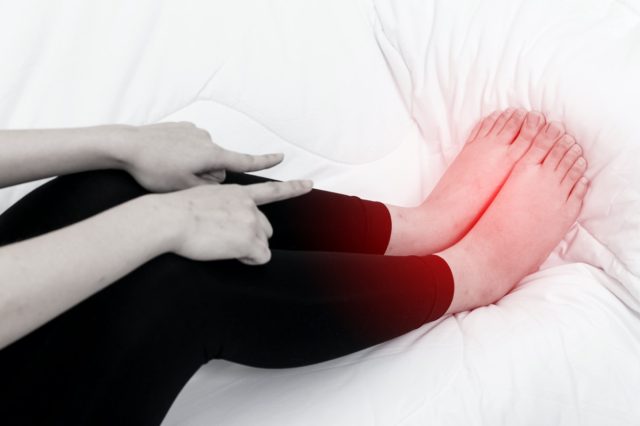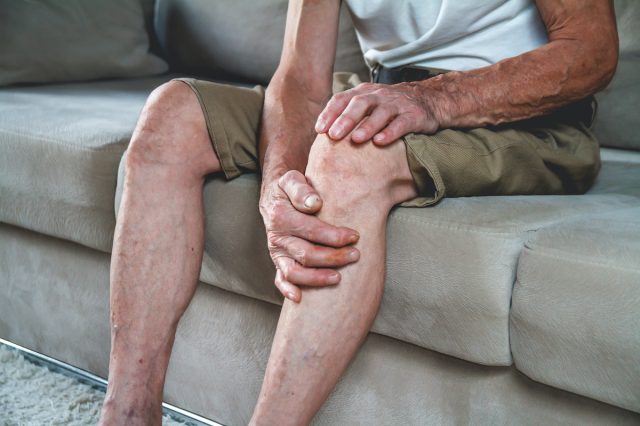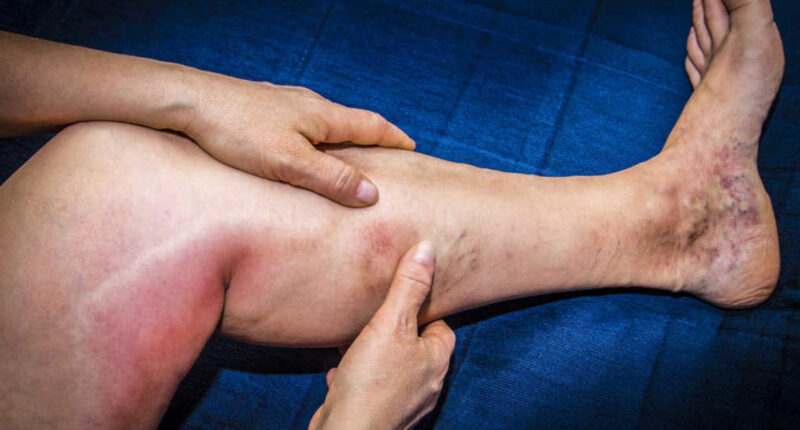5 Warning Signs You May Have a Blood Clot — Every year, 900,000 people are affected by DVT (Deep Vein Thrombosis), according to the CDC. “The most common type of venous thrombosis is DVT in the leg, and it can cause serious illness, disability, and, in some cases, death,” says Luis Sanchez, MD, Chief of Vascular Surgery. “Because almost anyone can develop this serious and preventable disease, it’s critical to understand the risk factors and warning signs if you or a loved one develops a DVT.”
While blood clots can happen to anyone, certain factors may increase the risk. Although DVT is more common in adults over the age of 60, it can occur at any age, especially if you have any health-related risk factors.
If you are overweight or obese, or if you have a family history of DVT, pulmonary embolisms, or clotting disorders, you are more likely to develop a deep-vein blood clot. If you smoke, your risk increases.” Early detection is critical for DVT treatment—here are five signs you may have a blood clot.
1. Swelling

One of the most common symptoms of DVT is leg swelling. “Approximately 70% of all patients develop swelling, which is the most common warning sign of DVT,” says Obinna Nwobi, MD, a vascular surgeon. “You will only have swelling in the affected leg if your DVT is in your thigh or calf. If the blood clot is in your pelvis, you may experience swelling in both legs.”
“As many as half of those who develop a DVT in their legs develop symptoms of intermittent leg pain and swelling that can last months to years,” according to the Cleveland Clinic. These symptoms are known as post-thrombotic syndrome, and they can occur as a result of damage to the valves and inner lining of your veins, causing blood “pooling” more than it should.”
2. Leg Pain

A cramping, aching pain in the leg that doesn’t go away could be a sign of DVT, doctors warn. There are ways to differentiate blood clots from muscle injury or regular cramps—with DVT, the pain doesn’t subside. “The cramping sensations and pain that occur with DVT will persist and even worsen with time,” says Dr. Sanchez. “Stretching or ‘walking it off’ like an ordinary charley horse will not ease DVT pain or clear it up. You may be experiencing a DVT if you feel pain in only one leg. This pain may often start in your calf and feel like cramping or soreness. Additionally, the skin of this leg may be red or discolored and feel warm to the touch. The pain may also worsen when bending the foot. However, some people with a DVT do not experience any symptoms.”
Early detection is crucial for treatment, so don’t delay getting it confirmed either way. “If you notice any of these symptoms, seek medical attention. Your doctor will examine your legs and may order an ultrasound test to evaluate blood flow through the veins and check for any blockage or obstruction,” says vascular surgeon Ankur Chandra, MD.
3. Warm Skin

Skin that is warm to the touch is another sign of DVT, experts say. “Your skin may appear red or discolored,” says Dr. Nwobi. “Additionally, the area of your leg that’s swollen or painful may also feel warmer than the rest of your skin.” The warmth is typically in the area where the clot is, and is noticeably different from the temperature around it.
It’s important to remember that someone could have DVT with no symptoms at all. “Deep vein thrombosis has classic symptoms—for example swelling, pain, warmth, and redness on the leg,” says Dr. Andrei Kindzelski, an NIH blood disease expert. “But about 30–40% of cases go unnoticed, since they don’t have typical symptoms. Usually people who develop deep vein thrombosis have some level of thrombophilia, which means their blood clots more rapidly or easily.”
4. Redness or Discoloration

Changes in skin color and texture could be a symptom of DVT. “The hyperpigmentation or skin discoloration is caused by the breakdown of red blood cells as they pass through this high pressure area,” says University of Michigan Health. “The skin in this area then becomes dry and flaky, causing itching. Continued inflammation and irritation can lead to skin breakdown, eczema and the development of skin ulcers.”
“Once you develop a DVT or pulmonary embolism, you are usually more likely to develop a second blood clot,” says Howard E. LeWine, MD. “This is because the original blood clot damages some of your leg veins. Now, your blood does not move as quickly or smoothly through these veins. This increases your risk of a new blood clot. If you have a DVT or pulmonary embolism, your symptoms should improve within a few days after starting treatment with blood-thinning medication. You will need to take medication for at least three to six months to prevent more blood clots from forming.”
5. Swollen Veins

Swollen veins that are hard and sometimes painful to the tough could be a sign of DVT. “Varicose veins are more common than people think and symptoms of a DVT can be subtle,” says Stephen C. Sorenson, MD, RVT, RPVI. “Early ultrasound evaluation and treatment by an expert in venous disease leads to the best overall outcome.”
“The only way to diagnose a DVT with 100% certainty is to contact a physician,” says Dr. Sanchez. “They may perform a blood test and Venous Doppler ultrasound exam to the leg to visualize the vessels to make a diagnosis. If you suspect you have developed a DVT, you may also use what is referred to as the Homan’s sign test. To conduct this test, extending your knee in the leg you want to check. Once your knee is in position, you will want someone to help you raise your leg to 10 degrees. Next, have them passively and abruptly squeeze your calf with one hand while flexing your foot with the other. Deep calf pain and tenderness may indicate the presence of DVT. It is important to note that the Homan’s test has low sensitivity and specificity in diagnosing DVT, but it can be valuable in addition to diagnostic procedures performed by your physician.”
ALSO READ: Gary Knafelc, Green Bay Packers Legend, Is Dead – What Happened?









